DOH Medicaid Update July 2006 Vol. 21, No. 8
Office of Medicaid Management
DOH Medicaid Update
July 2006 Vol. 21, No. 8
State of New York
George E. Pataki, Governor
Department of Health
Antonia C. Novello, M.D., M.P.H., Dr. P.H.
Commissioner
Medicaid Update
is a monthly publication of the
New York State Department of Health,
Office of Medicaid Management
Brian J. Wing, Deputy Commissioner
Table of Contents
Changes to Pharmacy Reimbursement, Effective July 1, 2006 - Clarification
Wrap-around Coverage for Drugs Not Covered By a Medicare Part D Plan
Update on the Medicare Pharmacist Phone Line
Provider Seminars
New Requirements for Gastric Bypass Surgery When Medicare is the Primary Payer
Restructuring Long-Term Care in New York State
Changes to the Dispensing Validation System
Smoking Cessation Support Programs
Ordering Transportation for a New York City Client
Billing and Payment for Intensity Modulated Radiation Treatment
How Often Do You Want to Receive Pended Claim Information on Your Remittances?
Receive Your Remittance Two and a Half Weeks Earlier
Transportation Providers: Introducing 'United We Ride'
Provider Services
Preferred Drug Program
Implementation
Return to Table of Contents
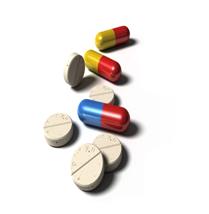
Effective June 28, 2006, New York State Medicaid began implementing a Pharmacy Preferred Drug Program (PDP). Detailed information was included in the June 2006 Medicaid Update, and is also available on the following websites:
http://NewYork.fhsc.com or or www.nyhealth.gov
Preferred Drug Program Frequently Asked Questions for Providers
General Questions
What is a Preferred Drug Program (PDP)?

A Preferred Drug Program (PDP) establishes a list of therapeutically effective drugs for which the Medicaid program will allow payment without a prior authorization (PA). Certain agents are considered
"preferred" within a specific therapeutic class because of their clinical characteristics or because New York State will receive manufacturer rebates, which lowers the cost. Agents that are considered "non-
preferred" continue to be available via prior authorization.
Which recipients are affected by this program?
Recipients, who receive pharmacy services through the Medicaid fee-for-service program, including those in Medicaid Managed Care, Medicare Part D and Child Health Plus A plans, are subject to this
new program. Those in Family Health Plus and Child Health Plus B (the non-Medicaid Program) receive medications through their managed care plan, and are not affected.
How are the drugs chosen for the PDP?
Selected classes are reviewed by the Pharmacy and Therapeutics (P&T) Committee, which makes clinical recommendations to the State on which drug(s) to consider preferred and non-preferred in each PDP class.
How is a drug determined to be "preferred" or "non-preferred"?
The P&T Committee reviews extensive clinical reports and evidence to determine if any drug has been found in clinical studies to be more effective than others in the same class. If a drug is found more effective, it is considered preferred regardless of the price. If there is no evidence of any drugs being more effective than others in the class, then the Committee looks at the net cost to the State for all
drugs in the class. Those that are more cost-effective are considered preferred. Note: All manufacturers are offered the opportunity to provide NYS with supplemental rebates which make their drug more
competitively priced. Some manufacturers provide such rebates, and others do not.
Who is on the P&T Committee?
The P&T Committee consists of actively practicing physicians, pharmacists, a nurse practitioner and consumer advocates, and represents specialties such as mental health, geriatrics, internal medicine,
HIV/AIDS, and pediatrics.
Is a non-preferred drug off the Medicaid formulary?
No, NYS Medicaid covers virtually all prescription drugs. There is no 'formulary' where certain drugs are not covered.
Questions on Using the PDP
Will patients currently taking drugs that are non-preferred be required to have prior authorization?

Patients who are currently prescribed a non-preferred drug may continue to use that prescription and remaining refills. When a new prescription is needed, the prescriber will need to change the patient's
prescription to the preferred drug, or, if medically indicated, get prior authorization for the non-preferred drug with each subsequent prescription.
If I want my patient to get a non-preferred drug, what do I do?
Call the Medicaid Pharmacy Prior Authorization Call Center at 1-877-309-9493. The clinical call line for the PDP will be Option #1. Prescribers will need to respond to questions about the patient's medical
need for a non-preferred drug to determine if it is medically necessary.
Is this the same automated system I use for Second Generation Antihistamines, Brand Medically Necessary Drugs and Proton Pump Inhibitors?
No, the PDP will use a live call line, not an automated system. But there is a single number to call for all Medicaid Pharmacy Prior Authorizations: 1-877-309-9493.
- press 1 if you are seeking approval for a non-preferred drug;
- press 2 for the automated (VIPS) system for other types of drug prior authorizations.
If I order a preferred brand name drug which has an A-rated generic, do I also have to get a PA through the Mandatory Generic Drug Program?
No. Preferred drugs do not need prior authorization, even if a generic is available. However, you will need to write "Brand Medically Necessary" and "Dispensed as Written" on the prescription.
What questions will I need to answer to get a prior authorization approved?
The following questions, at a minimum, will be asked regarding medical necessity:
- Has the patient experienced an adverse drug reaction with a preferred drug?
- Has the patient experienced a treatment failure with the preferred drug?
- Is there a documented history of successful therapeutic control with a non-preferred drug and transition to a preferred drug is medically contraindicated?
(Selected drugs may have additional clinical questions). If the patient meets one or more of these criteria, the prior authorization will be approved. See the Worksheet for Prior Authorization.
If my patient doesn't meet your clinical criteria, will I be denied a PA?
We provide every opportunity for approval. If the patient doesn't meet the specific criteria, we will refer you to a physician or pharmacist here who will immediately discuss the specific case further with you.
You can explain any special medical situations, and in most cases, that will enable an authorization.
How long does a PA last?
PAs last for the life of a prescription, which can be up to six months.
Can a PA be obtained by fax?
Yes, Prescribers can fax their requests to 1-800-268-2990. Fax forms may be obtained at the website https://newyork.fhsc.com/providers/PDP_forms.asp. A decision on a faxed request will be made within 24 hours. (Pharmacists cannot complete the PA process via FAX at this time.)
Can I call for more than one prior authorization request for the same patient or multiple patients, all in one call?
Yes.
What if I have more questions?
If you have more questions, you can visit http://NewYork.fhsc.com or http://www.nyhealth.gov or call for assistance at: 1-877-309-9493.
Will more drug classes be added, and when?
It is anticipated that Phase II of the program will be implemented at the end of September 2006. This will include several additional drug classes. Your office will be notified of the additions to the Preferred
Drug List. It will also be available on the Department's web site, prior to implementation.
Listed below is a "Quick List" for Phase I, which is an easy-to-use summary of the preferred drugs in each category effective June 28, 2006. Printt these sheets and keep them handy.
Also included in this article is the full listing of all drugs included in each class, with preferred and non-preferred drugs indicated.
New York State Medicaid
Preferred Drug "Quick List" - Phase I
Return to Table of Contents
These drugs are preferred, and do not require prior authorization.
| ACE Inhibitors | Beta Blockers |
|---|---|
| PREFERRED DRUGS | PREFERRED AGENTS |
| Altace® | acebutolol |
| benazepril HCl | atenolol |
| benazepril HCl/HCTZ | betaxolol |
| captopril | bisoprolol fumerate |
| captopril/HCTZ | labetalol |
| enalapril maleate | metoprolol tartrate |
| enalapril maleate/HCTZ | nadolol |
| lisinopril | pindolol |
| lisinopril/HCTZ | propranolol |
| Mavik® | timolol maleate |
| moexipril HCl | |
| Uniretic® | Bisphosphonates - Oral |
| PREFERRED AGENTS | |
| Angiotensin Receptor Blockers | Fosamax® Solution |
| PREFERRED AGENTS | Fosamax® Tablet |
| Benicar HCT® | Fosamax® Plus D |
| Benicar® | |
| Cozaar® | Calcium Channel Blockers (DHP) |
| Diovan HCT® | PREFERRED AGENTS |
| Diovan® | Afeditab CR® |
| Hyzaar® | Dynacirc® |
| Micardis HCT® | Dynacirc CR® |
| Micardis® | felodipine ER |
| isradipine | |
| ACEI + Calcium Channel Blocker Combination | nicardipine HCl |
| PREFERRED AGENTS | Nifediac CC® |
| Lotrel® | Nifedical XL® |
| Tarka® | nifedipine |
| nifedipine ER | |
| nifedipine SA | |
| Norvasc® | |
| Sular® |
New York State Medicaid
Preferred Drug List
Effective 6/28/06
Return to Table of Contents
All non-preferred drugs in these classes will require prior authorization.
| ACE Inhibitors | ACE Inhibitors |
|---|---|
| PREFERRED AGENTS | NON-PREFERRED AGENTS - PA Required Effective 6/28/06 |
| Altace® benazepril HCl captopril enalapril maleate lisinopril Mavik® moexipril HCl |
Accupril® Aceon® Capoten® fosinopril sodium Lotensin® Monopril® Prinivil® quinapril HCl Univasc® Vasotec® Zestril® |
| ACEI + Diuretic Combination | ACEI + Diuretic Combination |
| PREFERRED AGENTS | NON-PREFERRED AGENTS - PA Required Effective 6/28/06 |
| benazepril HCl/HCTZ captopril/HCTZ enalapril maleate/HCTZ lisinopril/HCTZ Uniretic® |
Accuretic® Capozide® fosinopril HCT Lotensin HCT® Monopril HCT® Prinzide® Quinaretic® Vaseretic® Zestoretic® |
| Angiotensin Receptor Blockers | Angiotensin Receptor Blockers |
| PREFERRED AGENTS | NON-PREFERRED AGENTS - PA Required Effective 6/28/06 |
| Benicar® Cozaar® Diovan® Micardis® | Atacand® Avapro® Teveten® |
| Angiotensin Receptor Blockers + Diuretic | Angiotensin Receptor Blockers + Diuretic |
| PREFERRED AGENTS | NON-PREFERRED AGENTS - PA Required Effective 6/28/06 |
| Benicar HCT® Diovan HCT® Hyzaar® Micardis HCT® |
Atacand HCT® Avalide® Teveten HCT® |
| ACEI + Calcium Channel Blocker Combination | ACEI + Calcium Channel Blocker Combination |
| PREFERRED AGENTS | NON-PREFERRED AGENTS - PA Required Effective 6/28/06 |
| Lotrel® Tarka® | Lexxel® |
| Beta Blockers | Beta Blockers CC |
| PREFERRED AGENTS | NON-PREFERRED AGENTS - PA Required Effective 6/28/06 |
| acebutolol atenolol betaxolol bisoprolol fumerate labetalol metoprolol tartrate nadolol pindolol propranolol timolol maleate |
Blocadren® Cartrol® Coreg®CC Corgard® Inderal LA® Inderal® InnoPran XL® Kerlone® Lopressor® Levatol® Sectral® Tenormin® Toprol XL®CC Trandate® Zebeta® |
| Bisphosphonates - Oral | Oral Bisphosphonates |
| PREFERRED AGENTS | NON-PREFERRED AGENTS - PA Required Effective 6/28/06 |
| Fosamax®Solution Fosamax®Tablet Fosamax®Plus D | Actonel® Actonel®with Calcium Boniva® |
| Calcium Channel Blockers (DHP) | Calcium Channel Blockers (DHP) |
| PREFERRED AGENTS | NON-PREFERRED AGENTS - PA Required Effective 6/28/06 |
| Afeditab CR® Dynacirc® Dynacirc CR® felodipine ER isradipine nicardipine HCl Nifediac CC® Nifedical XL® nifedipine nifedipine ER nifedipine SA Norvasc® Sular® |
Adalat® Adalat CC® Cardene® Cardene SR® Plendil® Procardia® Procardia XL® |
Billing questions? Call 1-800-343-9000.
Clinical concerns or preferred drug program questions? Call 1-877-309-9493.
Medicaid pharmacy policy and operations questions? Call 1-518 486-3209
Instructions for Prescribers:
PREFERRED DRUG PROGRAM PRIOR AUTHORIZATION
Prior Authorization Call Line 1- 877- 309- 9493
Prior Authorization Fax Line 1- 800- 268-2990
REMEMBER: Drugs identified by NYS Medicaid as "Preferred" do not require Prior Authorization. If you prescribe the preferred drug, no additional action is necessary.
PROGRAM INFORMATION
- Effective June 28, 2006, drugs identified by NYS Medicaid as non-preferred require prior authorization. A list of preferred and non-preferred drugs is available at http://www.nyhealth.gov and at http://newyork.fhsc.com
- The prescriber, or an agent of the prescriber, must call the prior authorization call line to initiate a prior authorization.
- Fax requests are permitted. A completed copy of the preferred drug program prior authorization fax request form, found on the reverse side of this page, should be sent to 1-800-268-2990. Fax requests may take up to 24 hours to process.
- If calling for prior authorization of a non-preferred drug, the prescriber is not required to maintain any forms; however, the prescriber or their agent should be prepared to answer the questions below and document the drug name, the reason the non-preferred drug is being requested and the prior authorization number in the patient's medical record. (Note-prescribers are still required to maintain a copy of prior authorization worksheets for currently existing prior authorization programs (i.e., Zyvox, Serostim, mandatory generic) in the patient's medical record).
- Prior authorization is required for each new prescription and is effective for the life of the prescription (up to five refills in six months).
PRESCRIBER PROCEDURE
- To initiate the prior authorization process, the prescriber must call the prior authorization phone line at 1-877-309-9493 and select Option "1" for Prescriber.
- To obtain a prior authorization for a non-preferred drug, select Option "1" again. Please be prepared to provide the following information when calling:
- Prescriber's Medicaid ID number or license number
- Client's Medicaid ID number
- Non-preferred drug name
- The questions you will be asked will include the following:
- Has the patient experienced a treatment failure with the preferred drug?
- Has the patient experienced an adverse drug reaction with a preferred drug?
- Is there a documented history of successful therapeutic control with a non-preferred drug and transition to a preferred drug is medically contraindicated?
- If uncertain which selection to make or if assistance with the prior authorization process is required, select Option "3" for support.
- Once authorization is given and a prior authorization number is obtained, the number must be written on the face of the prescription. Please be sure to include the "W" when writing prior authorization numbers for non-preferred drugs on the patient's prescription.
For billing questions, contact 1-800-343-9000. For clinical concerns or preferred drug program questions, contact 1-877-309-9493.
For Medicaid pharmacy policy and operations questions, call (518) 486-3209.
NEW YORK STATE MEDICAID PROGRAM PREFERRED DRUG PROGRAM
PRESCRIBER PRIOR AUTHORIZATION REQUEST FAX FORM
Prior Authorization Fax Line 1- 800- 268- 2990
All drugs that have been identified as non-preferred drugs must be prior authorized effective June 28, 2006. To request prior authorization via fax, please submit this form.
Fax requests may take up to 24 hours.
| PATIENT INFORMATION | PRESCRIBER INFORMATION |
|---|---|
| Client Name: | Prescriber Name: |
| Client Medicaid ID # (2 letters, 5 numbers, 1 letter): | Provider ID Number (MMIS)__ __ __ __ __ __ __ __ OR license NYS Physician /PA/Resident: 0 0 __ __ __ __ __ __ NYS Optometrist: U __ __ __ __ __ __ or V __ __ __ __ __ __ NYS Nurse Practitioner/Midwife: F __ __ __ __ __ NYS Dentist: 0 0 0 __ __ __ __ __ NYS Podiatrist: 0 0 0 0 __ __ __ __ OR Out-of-State License: __ __ __ __ __ __ __ __ (Use your state abbreviation in the first two spaces.) |
| Client Address: | Prescriber Address: |
| City: State: | City: State: |
| Home Phone: Zip: | Office Phone #: Office Fax #: Zip: |
| Gender (circle): M F DOB: | Contact Person: |
| DIAGNOSIS AND MEDICAL INFORMATION | ||
|---|---|---|
| Non-Preferred Drug Name: | Strength and Route of Administration: | Frequency: |
| [ ] New Prescription OR Date Therapy Initiated: | Expected Length of Therapy: | Qty: |
| Height/Weight: | Drug Allergies: | Diagnosis: |
| Prescriber's Signature: | Date: | |
| RATIONALE FOR REQUEST OF PRIOR AUTHORIZATION FORM CANNOT BE PROCESSED WITHOUT REQUIRED EXPLANATION |
|---|
| [ ] Patient has experienced a treatment failure with a preferred drug. |
| [ ] Patient has experienced an adverse drug reaction with a preferred drug. |
| [ ] There is documented history of successful therapeutic control with a non-preferred drug and transition to a preferred drug is medically contraindicated. |
| [ ] Other (please specify - if necessary, fax additional pages): |
For billing questions, contact 1-800-343-9000.
For clinical concerns or preferred drug program questions, contact 1-877-309-9493.
For Medicaid pharmacy policy and operations questions, call (518) 486-3209
Instructions for Pharmacists:
PREFERRED DRUG PRIOR AUTHORIZATION VALIDATION
Prior Authorization Call Line 1-877-309-9493
The prescriber must initiate the prior authorization process.*
PHARMACY RESPONSIBILITY
- Call 1-877-309-9493 prior to dispensing to validate the prior authorization number. Select Option "2" for Pharmacy.
- If the prior authorization number on the prescription ends with the letter "W," select Option "1" for prior authorization of non-preferred drugs. You will be asked to respond to the questions on the prior authorization worksheet. Please note: the "W" is used only to identify non-preferred drugs and is not a part of the prior authorization number. Do not enter the "W" when entering the prior authorization number.
- If you are uncertain which selection to make or require assistance with the prior authorization process, select Option "3" for support.
- You will be provided confirmation that you have authorization to dispense the drug.
- Pharmacists may validate multiple prior authorizations during one telephone call.
- Use the same prior authorization number for refills - you do not need to call the prior authorization line again for refills of this prescription.
SUBMITTING A CLAIM
- After the prior authorization is complete, there will be a slight delay while the information is transmitted to our fiscal agent. Until that transfer occurs, the prescription cannot be adjudicated on-line. We recommend you wait approximately two minutes before you begin your electronic claim submission.
- When billing a prescription electronically, the prior authorization number must be entered into the prior authorization code field.
- No more than two claims requiring prior authorization numbers can be submitted for payment in one transaction. Refer to the ProDUR/ECC Provider Manual for complete instructions.
- For technical questions regarding electronic on-line claims adjudication call 1-800-343-9000.
- Prior authorization does not guarantee payment. Payment is subject to eligibility and other Medicaid guidelines.
*For information on acceptable conditions for an emergency supply and for prior authorization to dispense an emergency supply of a non-preferred drug, call 1-877-309-9493 and press Option "3" for technical support.
For billing questions, contact: 1-800-343-9000
For clinical concerns or preferred drug program questions, contact: 1-877-309-9493
For Medicaid Pharmacy policy and operations questions, call: (518) 486-3209
NEW YORK STATE MEDICAID PROGRAM
PREFERRED DRUG PRIOR AUTHORIZATION VALIDATION
PHARMACY WORKSHEET
Prior Authorization Call Line 1-877-309-9493
Drugs that have been identified as non-preferred drugs must be prior authorized effective June 28, 2006.
The prescriber will obtain the prior authorization number and write it on the new prescription. Remember, prescriptions for non-preferred drugs will carry a prior authorization number ending with a "W." The "W" is used to alert pharmacy providers to select the non-preferred drug option when calling the prior authorization phone line. The "W" should not be included in the prior authorization field when submitting a claim. The prior authorization number for non-preferred drugs is an 11-digit number.
Be prepared with the following when you call.
| PRIOR AUTHORIZATION NUMBER (11- digit) | __ __ __ __ __ __ __ __ __ __ __ |
| CLIENT IDENTIFICATION NUMBER - (2 letters, 5 numbers, 1 letter) | __ __ __ __ __ __ __ __ |
| PHARMACY MMIS NUMBER | __ __ __ __ __ __ __ __ |
| PHARMACY CATEGORY OF SERVICE (COS) - (0161, 0441, 0288) Free-standing pharmacies usually have a COS of 0441 | __ __ __ __ |
| PHARMACY TELEPHONE NUMBER | (__ __ __)- __ __ __ - __ __ __ __ Area Code |
| NDC (11-digit) | __ __ __ __ __ __ __ __ __ __ __ |
| QUANTITY (per fill) | __ __ __ __ |
| NUMBER OF REFILLS | ____ |
For billing questions, contact 1-800-343-9000
For clinical concerns or preferred drug program questions, contact 1-877-309-9493
For Medicaid pharmacy policy and operations questions, call (518) 486-3209
To get a PA (prior Authorization) for the Preferred Drug List (ACE inhibitors, ARB's, Beta Blockers, Calcium Channel Blockers and Bisphosphonates):
- Call (877) 309-9493
- Select Option "1" if you are a Prescriber, or
- Select Option "2" if you are a Pharmacy Provider"
- Then select Option "1" for NON-PREFERRED DRUGS
To get a PA for the Mandatory Generic Program, Proton Pump Inhibitors, Antihistamines, Serostim, Zyvox:
- Call (877) 309-9493
- Select Option "1" if you are a Prescriber,or
- Select Option "2" if you are a Pharmacy Provider
- Then select Option "2" for ALL OTHER DRUGS
To get a PA for Enterals:
- Call (866) 211-1736
To discuss POS (Point of Service) issues, billing problems such as payment questions or errors in pharmacy claims
Call (800) 343-900
Please note the most recent change to pharmacy reimbursement.
*This information supercedes pharmacy patient information published in the June 2006 Medicaid Update.
Changes to Pharmacy Reimbursement
Effective July 15, 2006
Return to Table of Contents
Pharmacy reimbursement for prescription drugs is limited to:

- the federal upper limit (FUL) for specific multiple source drugs, or
- the lower of the billing pharmacy's usual and customary price charged to the general public, or the estimated acquisition cost (EAC) established by the NYS Department of Health.
The following changes have been made to the EAC definitions which will affect pharmacy reimbursement for drugs provided on and after July 15, 2006:
- Sole or Multi-source Brand Drugs
AWP of the prescription product minus thirteen and one-quarter percent (13.25%). - Multi-source Generic Drugs
The FUL if available or, if no FUL has been assigned by the Centers for Medicare and Medicaid Services (CMS), the lower of AWP minus twenty percent (20%) or the State based maximum acquisition cost (SMAC), when established by the NYS Commissioner of Health.
In addition, the pharmacy reimbursement for specialized HIV pharmacies which meet specific programmatic and operational criteria will be defined as follows:
- Sole or Multi-source Brand Drugs
AWP minus twelve percent (12%). - Multi-source Generic Drugs
The FUL, if available, or if no FUL has been assigned by the CMS, the lower of AWP minus twelve (12%) or SMAC, when established by the NYS Commissioner of Health.
Questions can be directed to the Medicaid Pharmacy Policy and Operations staff at 518-486-3209.
Attention
Prescribers
and
Pharmacies
This information supercedes information in previous issues of the Medicaid Update - June 2006 and the June 2006 Special Edition
Changes to "Wrap-Around" Coverage For Medicare Part D
Delayed Until January 1, 2007
Return to Table of Contents
Previously providers were notified that effective July 1, 2006, Medicaid was limiting its wrap-around coverage for drugs not covered by a Medicare Part D plan to four drug categories. However, due to recent legislative actions, the wrap-around program will continue to include all covered medications until January 1, 2007. As of that date, the wrap-around benefit will be limited to the following four categories of drugs:
- atypical antipsychotics,
- antidepressants,
- antiretrovirals, and
- anti-rejection drugs used in the treatment of tissue and organ transplants.
As with all Part D wrap-around claims, Medicaid should only be billed for these categories of drugs after billing Medicare Part B (when appropriate) or a Medicare Part D plan. NYS Medicaid still remains the payor of last resort.
NYS Medicaid continues to cover certain drugs which are excluded from the Part D benefit, such as barbiturates, benzodiazepines, some prescription vitamins, and non-prescription (OTC) drugs which can be billed directly to NYS Medicaid.
Questions can be directed to the Medicaid Pharmacy Policy and Operations staff at (518) 486-3209.
Pharmacists!
To discuss POS (Point of Service) issues,
errors in pharmacy claims, or
billing problems such as payment questions,
call (800) 343-9000.
Attention
Pharmacists
Update on the Medicare Pharmacist
Phone Line
Return to Table of Contents

The following Medicare Part D program information was distributed by the Centers for Medicare and Medicaid Services (CMS) on June 9, 2006. Please take note of this change.
During implementation of Medicare Part D, CMS provided a special contact phone line for pharmacists to assist in determining plan enrollment and Low-Income Subsidy (LIS) co-pay status. This pharmacist line (866-835-7595), has provided direct access to Medicare call service representatives (CSRs).
Beginning June 24, 2006, when pharmacists call the 1-866 pharmacist line, they will be directed to the standard 1-800 Medicare interactive voice response system. Medicare CSRs will continue to be available through this system, providing the same information and service for pharmacists as they do today.
To sign up for the Medicare Rx Update, please visit:
http://www.cms.hhs.gov/apps/mailinglists/default.asp
Seminar Schedule and Registration
Return to Table of Contents

Computer Sciences Corporation (CSC) announces a schedule of seminars to be offered to providers and their billing staff.
Seminar locations and dates are available at the eMedNY website. Registration is fast and easy.
Go to http://www.emedny.org/training/index.aspx to register for the eMedNY Training Seminar appropriate for your provider category and location.
If you are unable to access the internet to register, please contact CSC's call center at (800) 343-9000, to obtain a registration form.
You may also request seminar schedule and registration information by contacting CSC's Fax on Demand at (800) 370-5809. Please refer to these resources frequently for additional seminar offerings.
CSC representatives look forward to meeting with you at upcoming seminars!
New Requirements For Gastric Bypass Surgery
When Medicare Is The Primary Payer
Return to Table of Contents

After February 21, 2006, Medicare required that gastric bypass surgery be performed in a facility certified by:
- The American College of Surgeons as a Level 1 Bariatric Surgery Center, or
- The American Society for Bariatric Surgery as a Bariatric Surgery Center of Excellence (BSCOE).
If the surgery is performed in a facility that is not certified, Medicare will deny payment.
Because of this new Medicare requirement, there have been inquiries regarding Medicaid payment for gastric bypass surgery to dually-eligible individuals.
- If Medicare denies payment because the facility is not certified, Medicaid will not cover the surgery. Since Medicare is primary payer for the service and has imposed these limitations on delivery, we must adhere to their payment rules.
A copy of the decision memorandum is available online at:
http://www.cms.hhs.gov/mcd/viewdecisionmemo.asp?id=160
A list of approved facilities may be accessed at:
http://www.cms.hhs.gov/MedicareApprovedFacilitie/BSF/list.asp?
At this time, recipients who have Medicaid coverage only are not subject to these limitations.
UPDATED MEDICAID PROTOCOL FOR GASTRIC BYPASS SURGERY
In addition to the protocol previously provided in the January 2005 Medicaid Update, we are including below a body-mass index qualification consistent with Medicare policy.
The Medicaid Program provides reimbursement for gastric bypass surgery that has been determined to be medically necessary under the following circumstances:
- Recipient body-mass index (BMI) of at least 35; and
- The service/procedure is an integral and necessary part of a course of treatment for an illness; and
- The patient's obesity was created by, or is aggravating or creating, pathological disorders; and
- Regular medical treatment including endocrine, nutritional, psychiatric and counseling services, as appropriate, have been provided to the patient for a period of 12-24 months and regular weighing of patient has indicated insignificant weight loss.
Note: Under certain circumstances, it may be necessary to forego a medical treatment period when an urgent medical problem justifies surgery. No prior approval is required for this surgery. The detailed medical necessity for surgery must be documented in the patient's medical records.
Surgical treatment should be a treatment of last resort to control obesity.
Questions? Please contact the Bureau of Policy Development and Agency Relations at (518) 473-2160.
Restructuring Long-Term Care in New York State
Return to Table of Contents
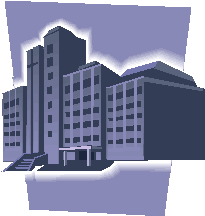
In past Medicaid Updates we pledged to keep you informed of the progress made by the New York State Department of Health (DOH) and Office for the Aging (NYSOFA) to realize recommended improvements in the State's long term health care system made by the Governor's Workgroup on Health Care Reform in its 2004 Report.
Accordingly, the following summary will provide an update on our most recent activities.
A Comprehensive Long-Term Care Medicaid Waiver
As mentioned in the June 2006 issue of the Medicaid Update, the Commissioner named a fourteen member Advisory Council, comprised of the Executive Directors and members of stakeholder organizations and government officials, who will meet later this summer to assist the Department in rebalancing the scope and delivery of long term care services.
The Council membership includes representatives of:
- The Broome County Community Alternative Systems Agency,
- Center for Disability Rights,
- Consumer Directed Choices,
- Healthcare Association of New York State,
- Home Care Association of New York State,
- New York Association of Homes and Services for the Aging,
- New York Association on Independent Living,
- New York City Human Resources Administration,
- New York State Office for the Aging,
- Oneida County Office for the Aging & Continuing Care,
- Schuyler Center for Analysis and Advocacy,
- Sick Kids Need Involved People (SKIP) of New York,
- Visiting Nurse Service of New York and,
- A consumer.
Subcommittees to the Council will be formed later to assist with the review of specific issues such as workforce development, housing, technology, etc.
The seven regional long term care collaboration sessions concluded successfully with nearly 1,000 consumers, advocates and government officials attending.
A summary report is coming soon to the Department's website!
Statewide Point of Entry (POE)
Return to Table of Contents
A non-competitive Request for Applications (RFA) was issued to local governments for contracts to startup/operate the POE in each county across the State.
As an immediate follow-up, NYSOFA and DOH held a joint Technical Assistance Seminar, on May 16, 2006, for Area Agency on Aging Directors and Local Department of Social Services' Commissioners.
- The Seminar focused on the RFA Application process and required POE Standards. Further meetings and assistance will be provided as the process continues.
How You Can Follow the Process
You can find copies of all published reports documenting our progress and keep up to date on upcoming meetings, requests for information, and opportunities for related State contracts on the DOH and NYSOFA websites at:
Attention
Prescribers &
Durable Medical
Equipment Providers
Changes To The
Dispensing Validation System
Return to Table of Contents

Changes have been made to the Dispensing Validation System (DVS) which affects prior authorizations obtained for Durable Medical Equipment (DME), Orthotics, Prosthetics and Prescription Footwear.
These changes include:
- Authorization numbers are now valid for 180 daysfrom the date authorization is obtained, and
- Authorizations may be cancelled within 90 daysof original issue date, if the need arises.
Authorizations received for pharmacy and medical supply items remain valid for only five days, and must be cancelled within 24 hours when the need arises.
Questions? Please contact CSC Provider Services at (800) 343-9000.
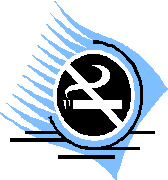
Smoking Cessation Support Programs
Return to Table of Contents
The Medicaid program encourages practitioners to copy and distribute the following information to their patients and to share it with their colleagues.
The Department of Health has made a commitment to provide assistance to Medicaid recipients who want to stop smoking.
- There is clear evidence that smoking and tobacco cessation will lead to better health.
Below are some of the free programs and resources available to assist in efforts to stop smoking:
| Region | Program | Telephone Number | County/Counties Served |
| Capital North | South Adirondack Tobacco Free Coalition 36 Phila St. Saratoga Springs, NY 12866 | (518) 581-1230 | Saratoga, Warren, Washington |
| Project ACTION 427 Guy Park Ave. Amsterdam, NY 12010 | (518) 841-7123 | Hamilton, Fulton, Montgomery | |
| Adirondack Tobacco Free Network 133 Margaret St. Plattsburgh, NY 12901 | (518) 565-4993 | Clinton, Essex, Franklin | |
| Capital South | Rural Three for Tobacco Free Communities One Atwell Road Cooperstown, NY 13326 |
(607) 547-7639 | Delaware, Otsego, Schoharie |
| Rip Van Winkle Tobacco Free Coalition 389 Fairview Ave. Hudson, NY 12534 | (518) 822-0999 | Columbia, Greene | |
| Capital District Tobacco Free Coalition 3 Winners Circle Suite 300 Albany, NY 12205 | (518) 459-4197 | Albany, Rensselaer, Schenectady | |
| Central North | Cayuga County Tobacco Free Coalition 188 Genesee St. Suite 208 Auburn, NY 13021 | (315) 252-0097 | Cayuga |
| T-PACC Jefferson Suite 404 A 200 Washington Ave. Watertown, NY 13601 | (315) 836-1560 | Jefferson, Lewis | |
| Tobacco Free Network of Oswego County 157 West First St. Oswego, NY 13126 | (315) 343-2344 | Oswego | |
| Tobacco Free Madison County 3059 Seneca Turnpike Canastota, NY 13032 | (315) 697-3947 | Madison | |
| Tobacco Free Onondaga County 421 Montgomery St. 9th Floor Syracuse, NY 13202 | (315) 435-3280 | Onondaga | |
| St. Lawrence Tobacco Free Coalition 80 State Highway 310 Suite 2 Canton, NY 13617 | (315) 386-2325 | St. Lawrence | |
| Central South | Tobacco Free Partners at Cortland & Tompkins Counties Room B25, 60 Central Ave. Cortland, NY 13045 | (607) 758-5501 | Cortland, Tompkins |
| Broome/Tioga PREVENT Coalition 225 Front St. Binghamton, NY 13905 | (607) 778-3068 | Broome, Tioga | |
| Chenango Community Partnership for Tobacco Control 24 Conkey Avenue Norwich, NY 13815 | (607) 337-4105 | Chenango | |
| Central | Smoke Free Mohawk Valley 83 E. Main St. Mohawk, NY 13407 | (315) 866-1004 | Herkimer, Oneida |
| New York City | NYC Coalition for a Smoke Free City 2 Lafayette St. 21st Floor New York, NY 10007 | (212) 442-3205 | Bronx, Kings, New York, Richmond, Queens |
| Hudson Valley | Pow'r Against Tobacco Coalition 35 Orchard St. White Plains, NY 10603 | (914) 949-2150 | Putnam, Orange, Westchester, Rockland |
| Smokefree Dutchess 387 Main St. Poughkeepsie, NY 12601 | (845) 486-3559 | Dutchess | |
| Sullivan Co. Tobacco Free Coalition 11 Hamilton Ave. Monticello, NY 12701 | (845) 794-8080 | Sullivan | |
| TFAC Tobacco Free Action Coalition of Ulster 741 Grant Ave. Lake Katrine, NY 12449 | (845) 943-6070 | Ulster | |
| Western Buffalo | Tri-County Tobacco Control Coalition 7 N. Erie St., Hall Clothier Bldg. Mayville, NY 14757 | (716) 484-3325 | Chautauqua, Cattaraugus, Allegany |
| Smoke Free NOW 430 E. Main St. Batavia, NY 14020 | (585) 815-1871 | Genesee, Orleans, Wyoming | |
| Erie-Niagara Tobacco-Free Coalition Elm and Carlton Streets Buffalo, NY 14263 | (716) 845-3407 | Erie, Niagara | |
| Western Rochester | Tobacco Action Coalition of the Finger Lakes 1595 Elmwood Ave. Rochester, NY 14620 | (585) 442-4260 | Ontario, Seneca, Wayne, Yates |
| Smoking and Health Action Coalition of Monroe County 1595 Elmwood Ave. Rochester, NY 14620 | (585) 442-4260 | Monroe | |
| Southern Tier Tobacco Awareness Coalition PO Box 858. Corning, NY 14830 | (607) 937-9922 | Chemung, Schuyler, Steuben | |
| Livingston Co. Tobacco Control Coalition PO Box 4 Mt. Morris, NY 14510 | (585) 243-7524 | Livingston |
The New York State Medicaid program is committed to assisting all Medicaid recipients who would like to stop tobacco use.
Medicaid covers both prescription and over-the-counter smoking cessation agents.
For information on New York State Medicaid's Smoking Cessation Policy, please call (518) 486-3209 or visit the following websites:
http://www.nysmokefree.com
http://www.nyhealth.gov/health_care/medicaid/program/update/medup-q-s.htm#smok.
Attention
Transportation
Ordering Providers
Ordering Transportation
For a New York City Client
Return to Table of Contents
Are you a nursing home provider outside of New York City?

What if you need to request transportation for a resident whose county of fiscal responsibility is New York City?
Call (800) 343-9000 with the following information:
- eMedNY identification number of the:
- client,
- your facility, and
- transportation provider;
- first and last dates of transport; and
- number of round trips requested.
Questions? Please call the Provider Resources Unit at (518) 474-9219.
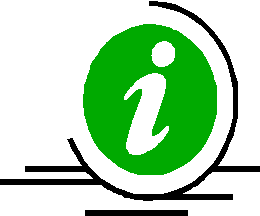
Do You Have a Question
About Medicaid Transportation?
Return to Table of Contents
Send an email to:
Attention
Physicians &
Ordered Ambulatory
Providers
Billing and Payment for
Intensity Modulated Radiation Treatment
Return to Table of Contents
Effective for dates of service on or after August 1, 2006, the following procedure codes are active for Medicaid payment for services provided by physician and ordered ambulatory providers:
| Code | Description | Fee |
| 77301 | Intensity modulated radiotherapy plan, including dose- volume histograms for target and critical structure partial tolerance specifications | $103.60 |
| 77418 | Intensity modulated treatment delivery, single or multiple fields/arcs, via narrow spatially and temporarily modulated beams, binary, dynamic MLC, per treatment session | $63.70 |
As appropriate, physicians may bill for the global procedure alone or with modifier -26 for professional component. Ordered ambulatory providers may bill with modifier -TC if providing the technical component portion of the procedure.
Claims must be submitted on a paper claim for manual review and must include an appropriate diagnosis code and attached documentation specifying the need for high precision radiation therapy. Claims for children must include clinical notes demonstrating that the benefit of Intensity Modulated Radiation Treatment (IMRT) outweighs the potential risk of second malignancy (see Hall, 2006).
Questions? Please contact the Division of Medical Review and Provider Enrollment at (518) 474-8161.
Fraud impacts all taxpayers.
Return to Table of Contents
Do you suspect that a recipient or a provider has engaged in fraudulent activities?
Please call:
1-877-87FRAUD
Your call will remain confidential.
eMedNY
Update!
How Often Do You Want To Receive
Pended Claim Information
On Your Remittances?
Return to Table of Contents
eMedNY has the capability to give you some choices about how often pending claim information is reported on your weekly remittances.
- It is important to note that when a claim is first pended, it will ALWAYS appear on that week's remittance statement (paper or electronic).
For electronic remittances, pended claims appear on the supplemental file delivered along with the HIPAA compliant 835 or 820.
Three Options for Paper Remittances
You can choose from any of the three following pended claim delivery options:
- FIRST REMIT ONLY: This option would report pending claims in ONLY the first "new pend" remittance and not appear again until the status changes to a paid or denied claim, or
- CUMULATIVE EVERY FOURTH WEEK: This option would report pending claims in the first "new pend" remittance and again every fourth weekly cycle.
The fourth cycle references weekly cycle numbers that are divisible by four (for example 1484, 1488, 1492 and so on). This means that every fourth cycle a provider would receive a cumulative list of all claims pending at that point in time, regardless of when a claim was first pended, or - EVERY WEEK: This option would report a cumulative list of all pending claims on every weekly remittance.
Two Options for Electronic Remittances
You can choose from either of the two following pended claim delivery options:
- FIRST REMIT ONLY: This option would report pending claims in ONLY the first "new pend" remittance and not appear again until the status changes to a paid or denied claim, or
- EVERY WEEK: This option would report a cumulative list of all pending claims on every weekly remittance.
How Can You Request a Different Remittance Delivery Option for Pended Claims?
To request a change in the delivery method for pended claims, providers need to complete the PENDED CLAIM RECYCLE REQUEST FORM.
You may request a copy of the form and instructions by calling CSC's Fax-on-Demand System at (800) 370-5809 and ordering document number 3017 or visit:
http://www.emedny.org/info/ProviderEnrollment/index.html
For information on which type of pended claim reporting an individual Provider is currently receiving, or for other questions, please contact the eMedNY Call Center at (800) 343-9000.
Attention
All Providers
Receive Your Remittance
Two And A Half Weeks Earlier!
Return to Table of Contents

Electronic remittance statements are delivered to your eMedNY eXchange or FTP account two and a half weeks earlier than the paper remittances!
- If you elect to start receiving electronic remittances, this would allow you to perform reconciliations and any associated resubmissions or adjustments two and a half weeks sooner than currently possible with paper remittances.
Software Needed
eMedNY electronic remittances are sent in HIPAA-compliant 835 (or 820 for Managed Care plans) format, so software is needed to process or interpret these remittances. Each electronic remittance is delivered with a supplementary file, which provides the New York Medicaid edit error codes for denied and pended claims.
If you are looking for software, there are 64 software vendors listed online that offer a variety of solutions. For the listed vendors, please go to:
http://www.emedny.org/HIPAA/Vendors/NYSDOH%20SOFTWARE%20VENDOR%20LIST.pdf.
If you are interested in finding out more about electronic remittances, we suggest that you contact some of these vendors to find out what solutions are offered and at what cost.
When negotiating with vendors it is important to ask about the level of support the vendor will offer and the cost associated with updates to the software solution you choose.
Be sure that the vendor's solution will include processing the 835 and the associated supplementary file.
Requesting Electronic Remittances
After you have selected a software solution, your next step is to request electronic remittances. The Electronic Remittance Request Form is available online at:
You must have an ePACES or FTP account prior to signing up for electronic remittances.
- If you need information about signing up for ePACES or FTP, please go to http://www.emedny.org, or contact the eMedNY Call Center.
Computer Sciences Corporation (CSC) also offers the option of receiving both paper and electronic versions of the same remittances for up to four weeks to allow migration from paper to the electronic remittance with complete confidence.
- If you wish to receive this benefit, please contact CSC and request a "DUAL REMITTANCE" application.
Questions? Please call the CSC eMedNY Call Center at (800) 343-9000.
Attention
Transportation
Providers
Introducing............
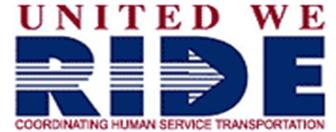
Return to Table of Contents
What is "United We Ride?"
United We Ride is an interagency federal government initiative that supports states and their localities in developing coordinated human service delivery systems.
Staff from the Department of Health support this initiative, and work with representatives from the State Department of Transportation, Office for the Aging, Office of Mental Retardation and Developmental Disabilities, and Office Temporary and Disability Assistance to implement United We Ride in New York State.

In 2005, New York was one of 33 states to receive a planning grant to improve coordination relative to this initiative. United We Ride activities are currently underway in Albany County.
What is Human Service Transportation?
Human service transportation includes a broad range of transportation service options designed to meet the needs of transportation for disadvantaged populations including older adults, disabled persons and/or those with lower income.
What is Coordinated Transportation?
Coordinating individual human service transportation programs makes the most efficient use of limited transportation resources by avoiding duplication caused by overlapping individual program efforts and encouraging the use and sharing of existing community resources.
In communities where coordination is made a priority, citizens benefit from more extensive service, lower costs and easier access to transportation.
Coordination can lead to significant reductions of operating costs (per trip) for transportation providers.
Where can I send an idea for coordinated transportation in my community?
We are always open to new ideas! Please mail, email, fax, or call, with your suggestions to the New York State Medicaid Transportation Program.
| Mail: | New York State Medicaid Transportation Program 99 Washington Avenue, Suite 720 Albany, New York 12210 |
| Email: | medtrans@health.state.ny.us |
| Call: | (518) 474-9219 |
| Fax: | (518) 473-5508 Attn: Medicaid Transportation |
Where can I obtain more information?
For more information, please visit http://www.unitedweride.gov/, or contact the Medicaid Transportation Program.

PROVIDER SERVICES
Return to Table of Contents
Missing Issues?
The Medicaid Update, now indexed by subject area, can be accessed online at the New York State Department of Health website:
http://www.nyhealth.gov/medicaid/program/update/medup-index.htm
Hard copies can be obtained upon request by emailing: MedicaidUpdate@health.state.ny.us or by calling (518) 474-9219.
Do You Suspect Fraud?
If you suspect that a recipient or a provider has engaged in fraudulent activities, please call the fraud hotline at: 1-877-87FRAUD. Your call will remain confidential.
As a Pharmacist, Where Can I Access the List of Medicaid Reimbursable Drugs?
The list of Medicaid reimbursable drugs is available at: http://www.eMedNY.org/info/formfile.html
Questions About an Article?
For your convenience each article contains a contact number for further information, questions or comments.
Do You Want Information On Patient Educational Tools and Medicaid's Disease Management Initiatives?
Contact Department staff at (518) 474-9219.
Questions About HIPAA?
Please contact CSC Provider Services at (800) 343-9000.
Address Change?
Questions should be directed to CSC at (800) 343-900, option 5.
Patient Eligibility
Call the Touchtone Telephone Verification System (800) 997-1111, (800) 225-3040 or (800) 343-9000.
Fee-for-service Provider Enrollment
A change of address form is available at:
http://www.emedny.org/info/ProviderEnrollment/Provider%20Maintenance%20Forms/6101-Address%20Change%20Form.pdf.
Rate-based/Institutional Provider Enrollment
A change of address form is available at:
http://www.emedny.org/info/ProviderEnrollment/Provider%20Maintenance%20Forms/6106-Rate%20Based%20Change%20of%20Address%20Form.pdf
Billing Question? Call Computer Sciences Corporation:
Provider Services (800) 343-9000.
Comments and Suggestions Regarding This Publication?
Please contact the editor, Timothy Perry-Coon at MedicaidUpdate@health.state.ny.us or via telephone at (518) 474-9219 with your concerns.
The Medicaid Update: Your Window Into The Medicaid Program
The State Department of Health welcomes your comments or suggestions regarding the Medicaid Update.
Please send suggestions to the editor, Timothy Perry-Coon:
NYS Department of Health
Office of Medicaid Management
Bureau of Program Guidance
99 Washington Ave., Suite 720
Albany, NY 12210
(e-mail MedicaidUpdate@health.state.ny.us)
The Medicaid Update, along with past issues of the Medicaid Update, can be accessed online at the New York State Department of Health web site:http://www.health_care/medicaid/program/update/main.htm